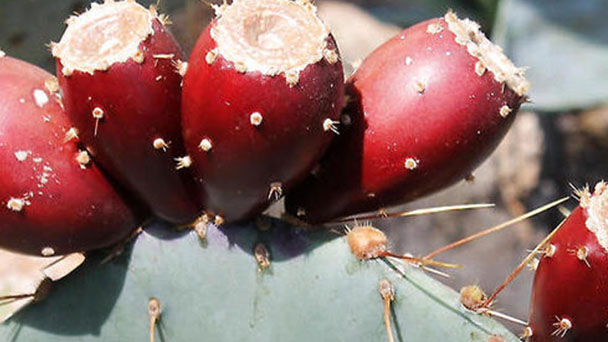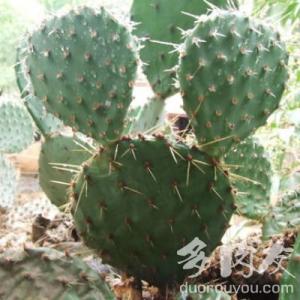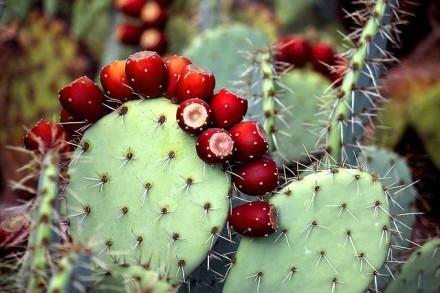How to grow, propagate and care for tulip prickly pear
Written by Maggie
Feb 23 2021

Tulip prickly pear is a kind of succulent plant of the genus Cactus, Cactus family. The Tulip Prickly Pear is a hardy, drought-tolerant plant that makes it a good choice for indoor potted plants. How to grow and care for tulip prickly pear? And how to propagate tulip prickly pear? Let's look down together.
How to grow and care for tulip prickly pear
The tulip prickly pear has gone from wild to widely cultivated indoors, reflecting a trend of urban dwellers choosing potted varieties. Because the building area is limited, air is dry, and cultivating large or more delicate potted flowers often grows bad. When we grow and care for tulip prickly pear, choose only a few small, drought-resistant, management is simple and ornamental value is high breed most appropriate, cactus kind plant is in line with these a few kinds of requirements as it happens.
When we grow and care for indoor potted Tulip prickly pear, it is advisable to choose a small, flower-rich, spherical variety. This kind of plant should not be considered drought tolerant in cultivation, and it is neglected to water and fertilize it normally. Indoor cultivation can build an enclosed space of high temperature, high humidity with lead wire and plastic film on the windowsill, most cactus grows not only fast below such condition and lustre is glittering and translucent.
The Tulip Prickly Pear requires a well drained, breathable, calcareous sandy or sandy loam soil. When we grow and care for a newly planted tulip prickly pear, first do not water, spray a few times a day, half a month after a small amount of water, a month after the new root grows to normal water. Water the plants sparingly when the winter temperature is low and the plants go into hibernation. After spring, with the rise of temperature, plant dormancy gradually lifted, watering can gradually increase. When we grow and care for tulip prickly pear, apply decaying, thin liquid fertilizer every 10 days to half a month. Do not apply fertilizer in winter.

How to propagate tulip prickly pear
The Tulip Prickly Pear is easy to propagate and can be sown, cut or grafted.
Cutting propagation
Cutting time
Under normal conditions, cutting propagation of tulip prickly pear in spring is the most suitable. Where there is a greenhouse, it can be carried out all year round.
Preparation of matrix
Tulip prickly pear is drought resistance, barren, avoid water. Therefore, the matrix must have good air permeability, good drainage performance, and can keep wet characteristics, with vermiculite, perlite, etc. Before tulip prickly pear cutting propagation, it can also be prepared from 4 parts of coarse river sand, 3 parts of loam soil, 2 parts of leaf rot and 1 part of rice husk ash.
Cut out the cuttings
When carrying out cutting propagation of tulip prickly pear, select robust and mature stem nodes from the mother plants with strong growth potential and no pests and diseases as cuttings. Cut cuttings from the mother plant with a rust-free spatula and wipe the cuttings with alcohol before and after each cut.
The base of the cuttings will be shallow embedded in the matrix, avoiding too deep, resulting in decay. The cuttings are difficult to stand upright at this point (because they have become soft after drying) and can be laid flat on the substrate; It can also be supported by small wooden sticks, and then gently press the soil on both sides of the cuttings with both hands to make them close to the soil.
Division propagation
Many Tulip prickly pear son can grow plants, like ball cactus on the stem of boy the ball, and the round fan cactus or segmental cactus kind can the eldest son, for these varieties need a knife will cactus growing point cut off, after a period of time, such cultivation near the growing point of many boy the ball out, stay long ball to appropriate size, and can be cut cutting propagation.
Sowing propagation
The sowing propagation of Tulip prickly pear should be carried out when the anther is dehiscent, pollen is mature and the pistil stigma is fully secreted mucus. However, the maturation time of pistil and stamen may not be the same in different species. If the female parent blooms later than the male parent, the male parent can be put in a cool place first so that it blooms later, or the pollen of the male parent can be collected and stored in a cool and dry place.
When the pistil of the mother is mature, it is taken out for pollination. Most species are most successful at tulip prickly pear sowing propagation within an hour or two in the afternoon of the second day of flowering. Use a clean brush to dip pollen lightly on the stigma of the mother parent or use fine forceps to pick up pollen and place it on the stigma. If the weather is hot, humidity is too large, there is water on the flower, then the fertilization rate is not high.
Grafting propagation
Grafting propagation is a gardening technique commonly used in Tulip Prickly Pears. Some Tulip Prickly Pears have very weak roots. After a long period of cultivation, the roots will gradually lose their original function and the plant will lose its vitality. Grafting is the cure-all for these Tulip Prickly Pears. In addition, grafting can be used to speed up the growth of the Tulip Prickly Pear or to make the root rot plant continue to grow after the lesion has been removed.

Latest Updated
- Benefits of Bugleweed - 7 Science-backed Health Benefits
- Bugleweed Dangers & Side Effects - Is It Poisonous?
- How to Plant Evergreen Trees - What You Should Know
- When to Plant Evergreens - Grow Guide for Evergreen Trees
- 12 Wonderful Evergreen Shrubs for Your Garden
- 12 Popular Evergreen Plants with Pictures for Beginners
- When And How To Prune A Lilac Bush Like a Pro
- How to Grow & Care for Lilac Vine (Hardenbergia Violacea)
- Japanese Lilac Tree (Syringa Reticulata) Care & Propagation Guide
- Shumard Oak Pros and Cons - What to Know
Popular Articles
- Winter maintenance of Antirrhinum Majus
- How to Grow Terminalia Mantaly Tree
- How to Grow and Care for Crossostephium Chinense
- How to grow Antirrhinum Majus in spring
- Peristeria Elata (Dove Orchid) Profile: Info & Care Guide
- Underwatered Snake Plant (Sansevieria Trifasciata) - Signs And How To Fix
- How to Care for Brazilian Jasmine Plant (Mandevilla Sanderi)
- How to Grow & Care for Graptopetalum Purple Delight in Summer
- Rosa Chinensis (China Rose): Plant Growing & Care Tips
- How to Care for Baby Sun Rose (Aptenia Cordifolia)